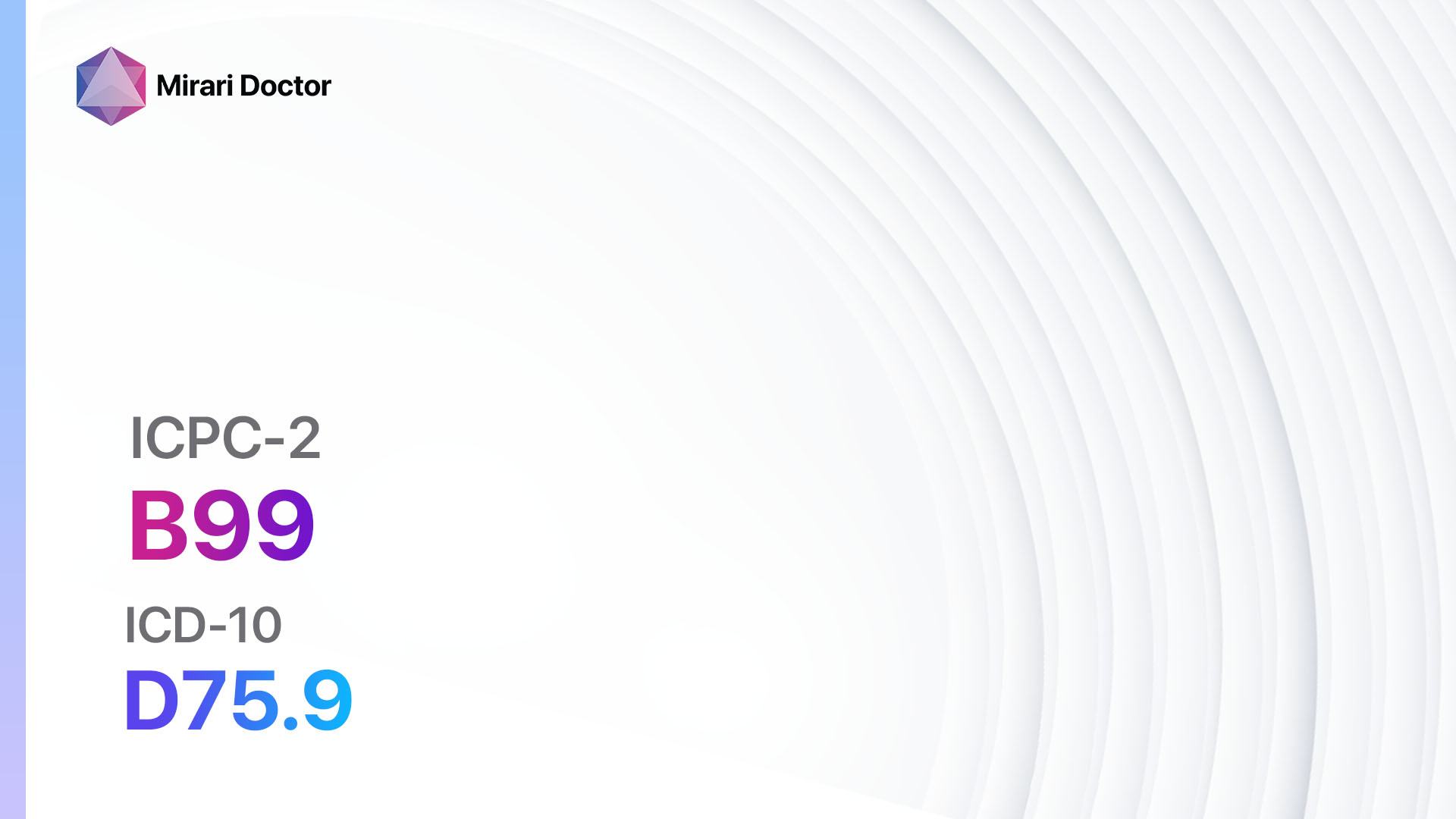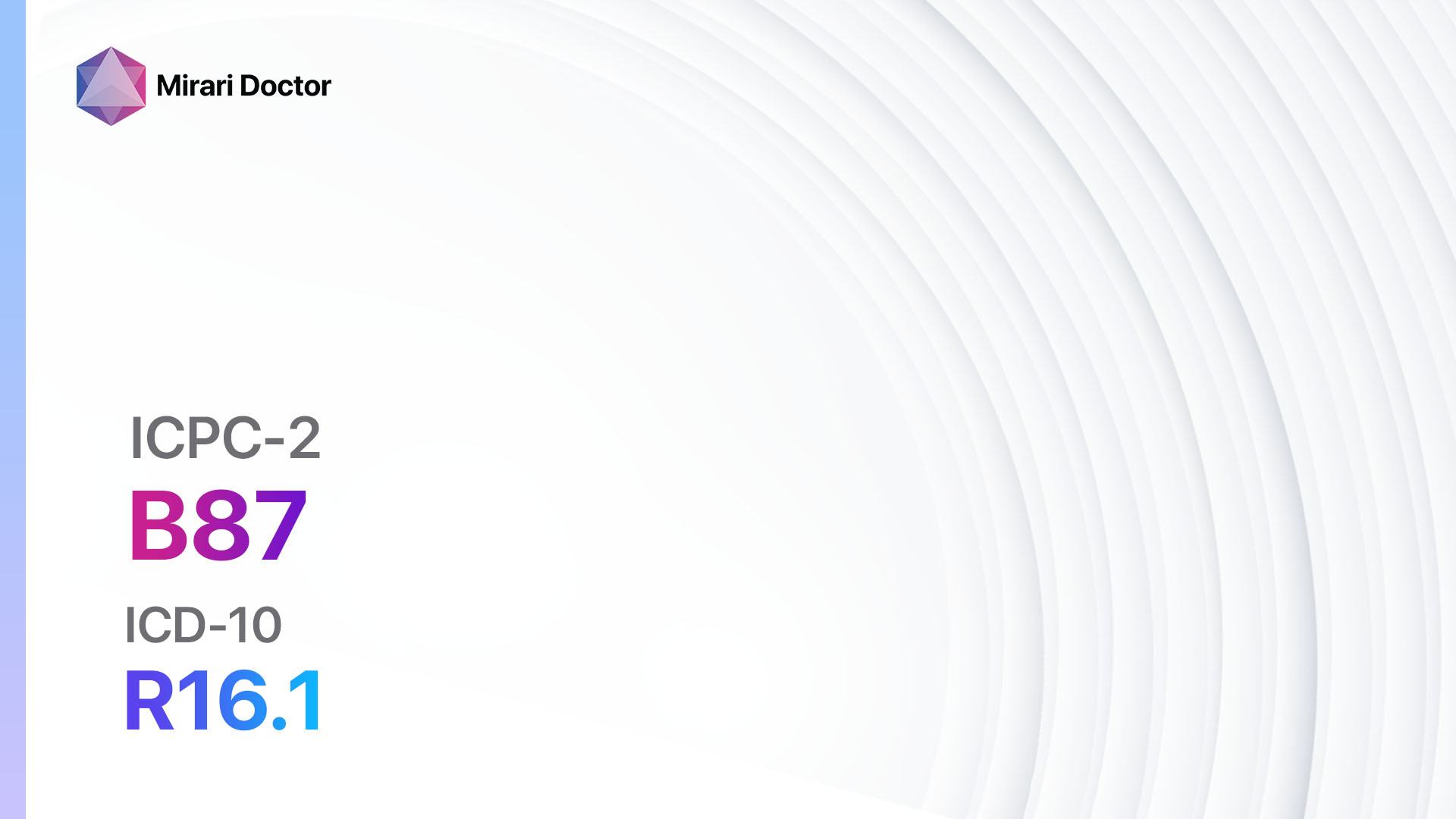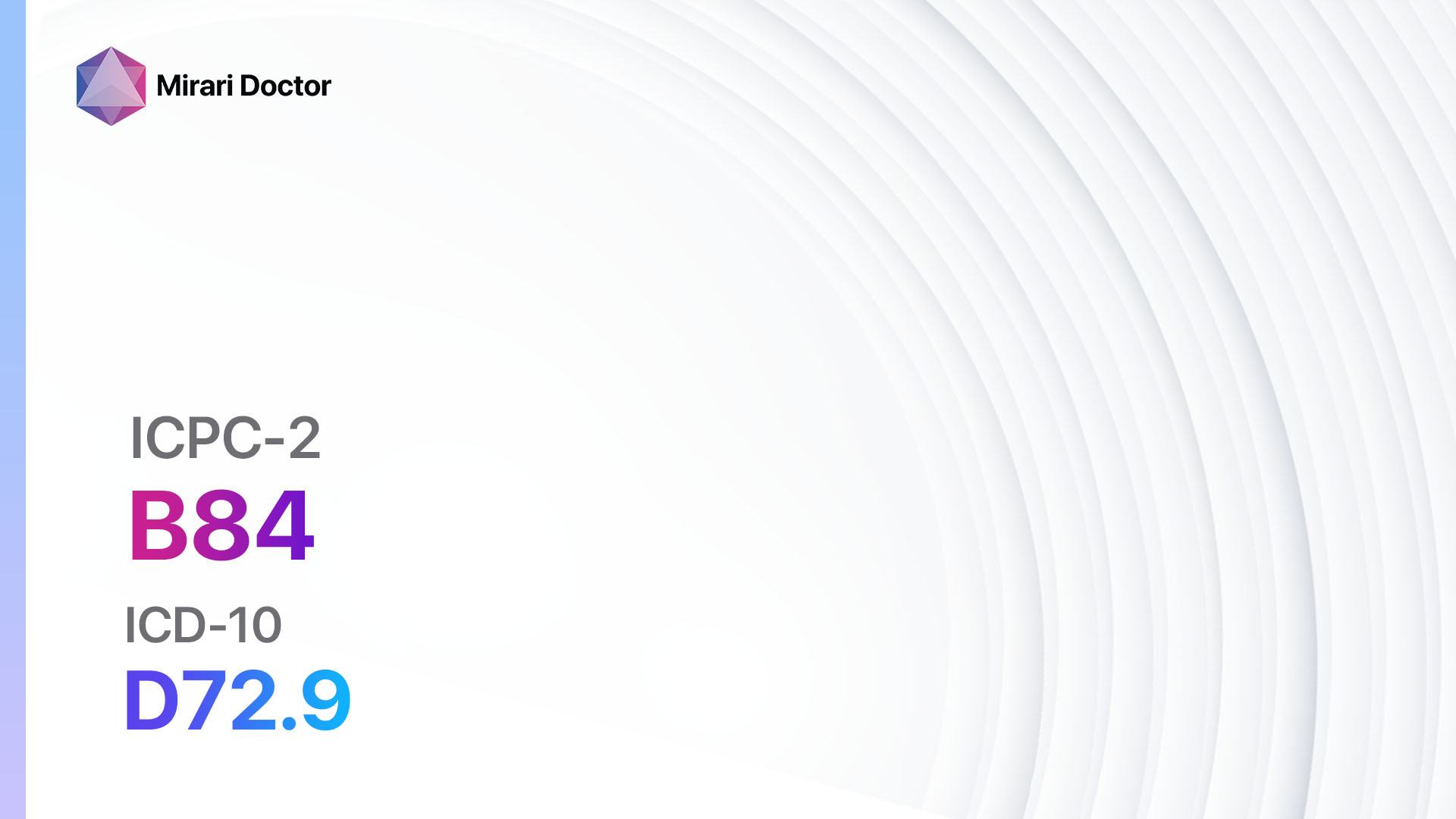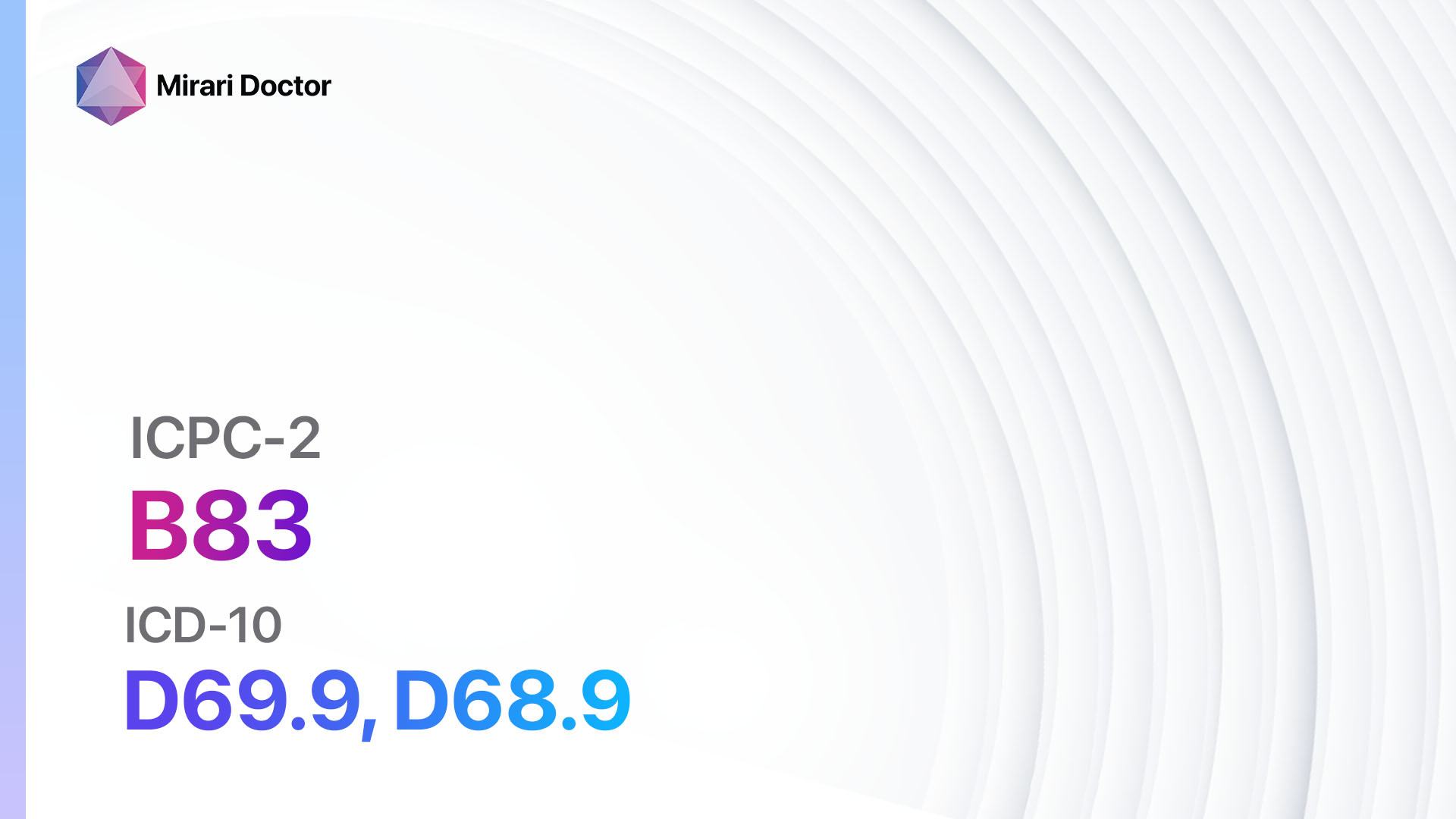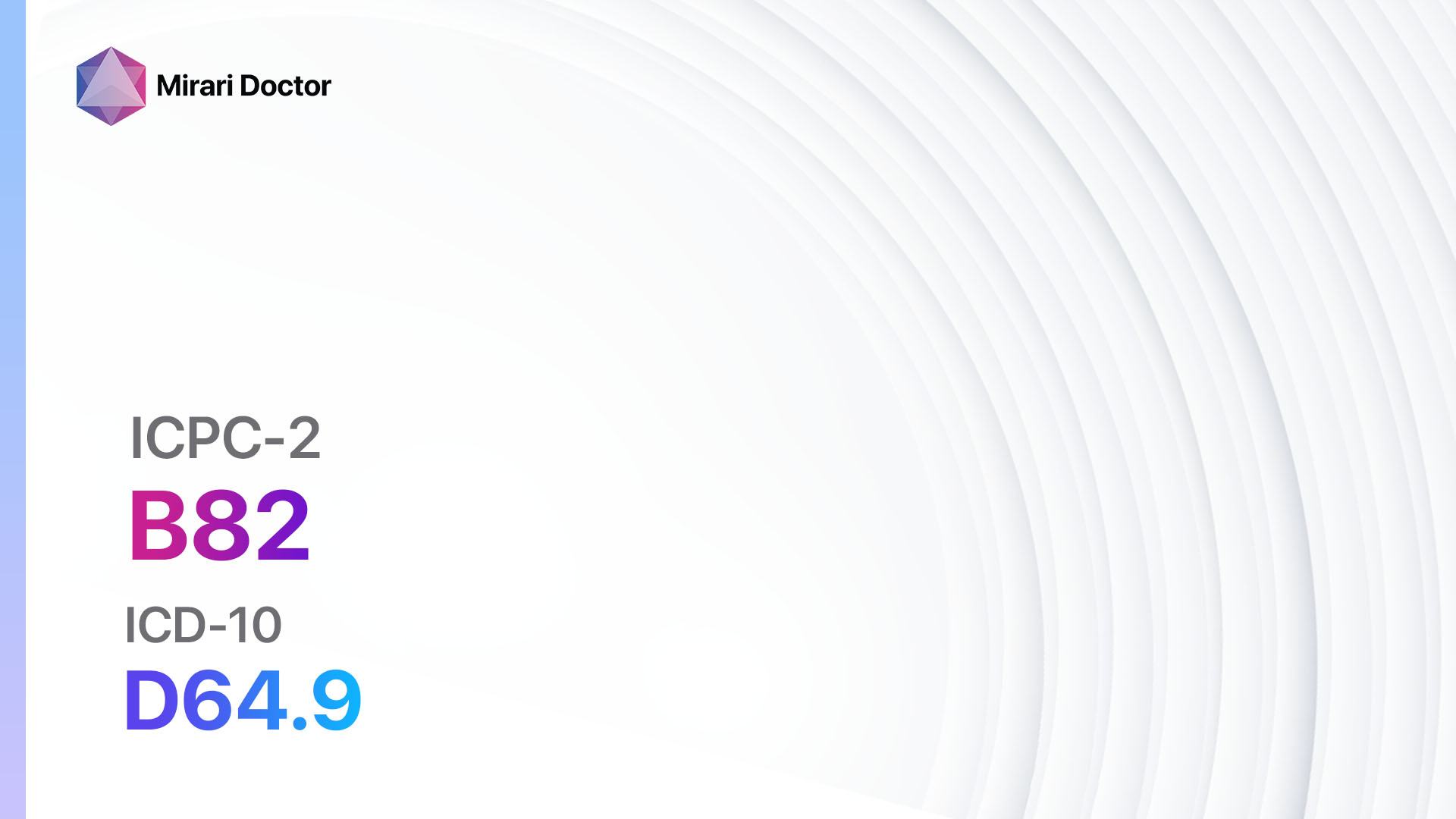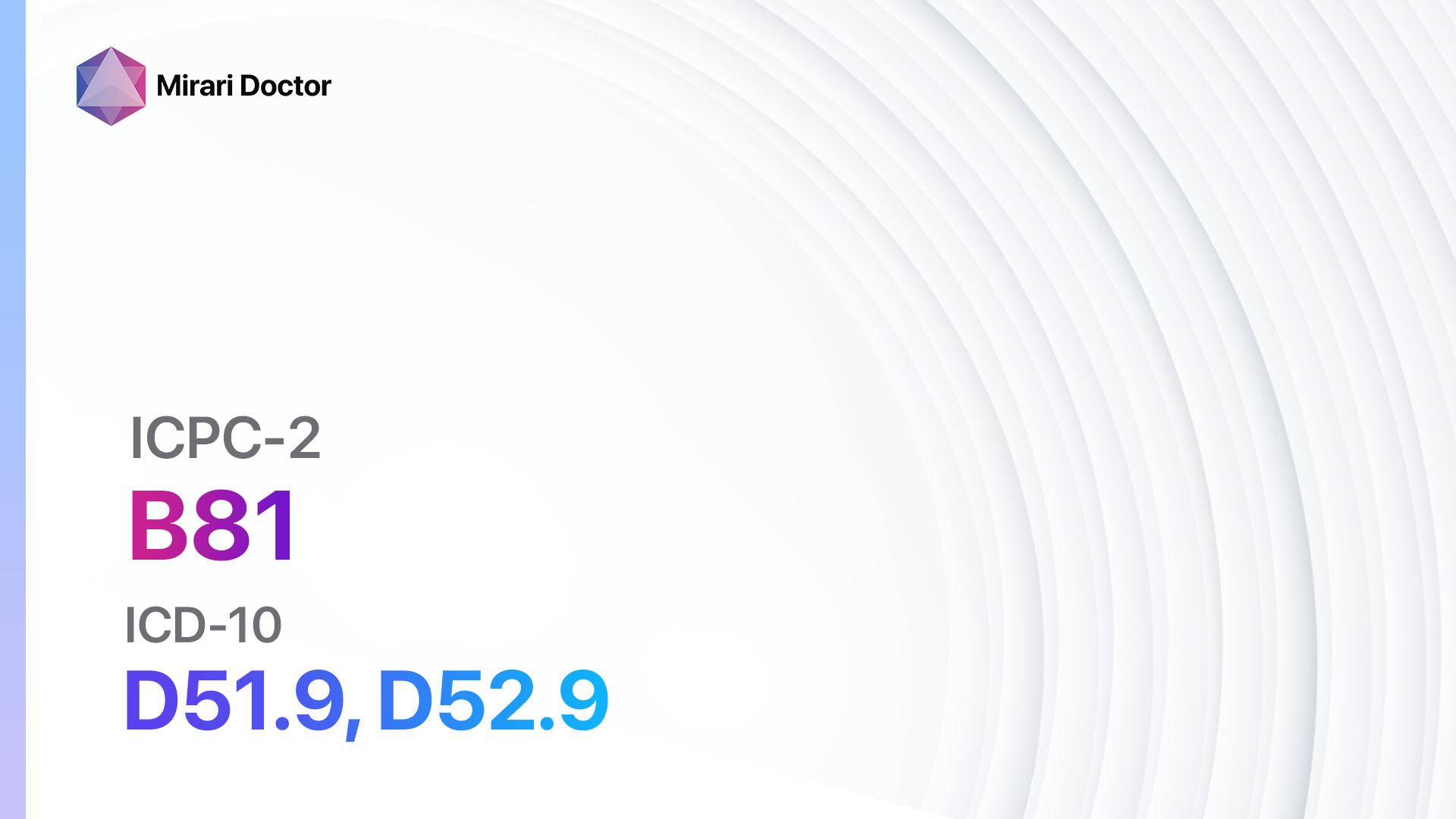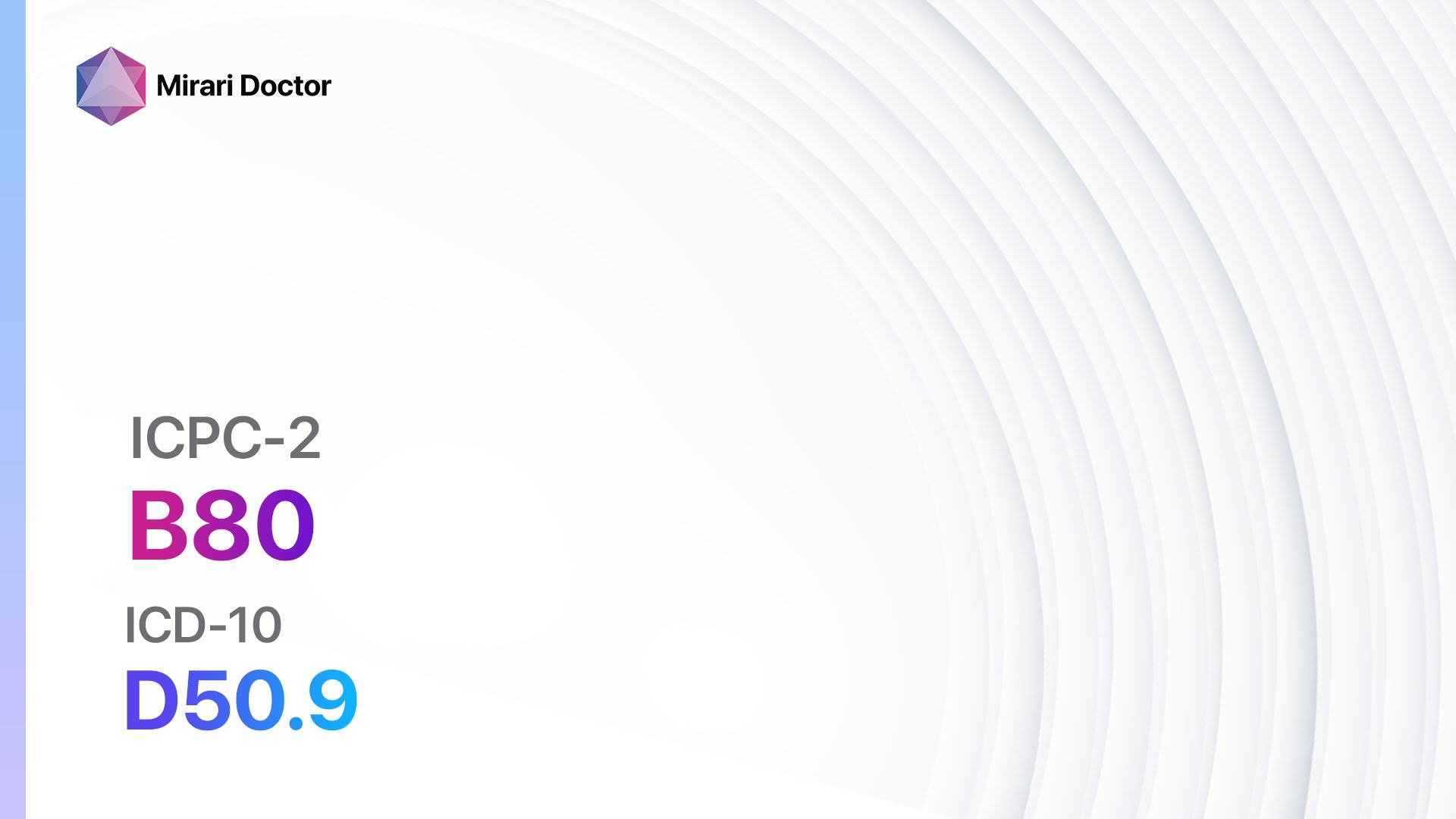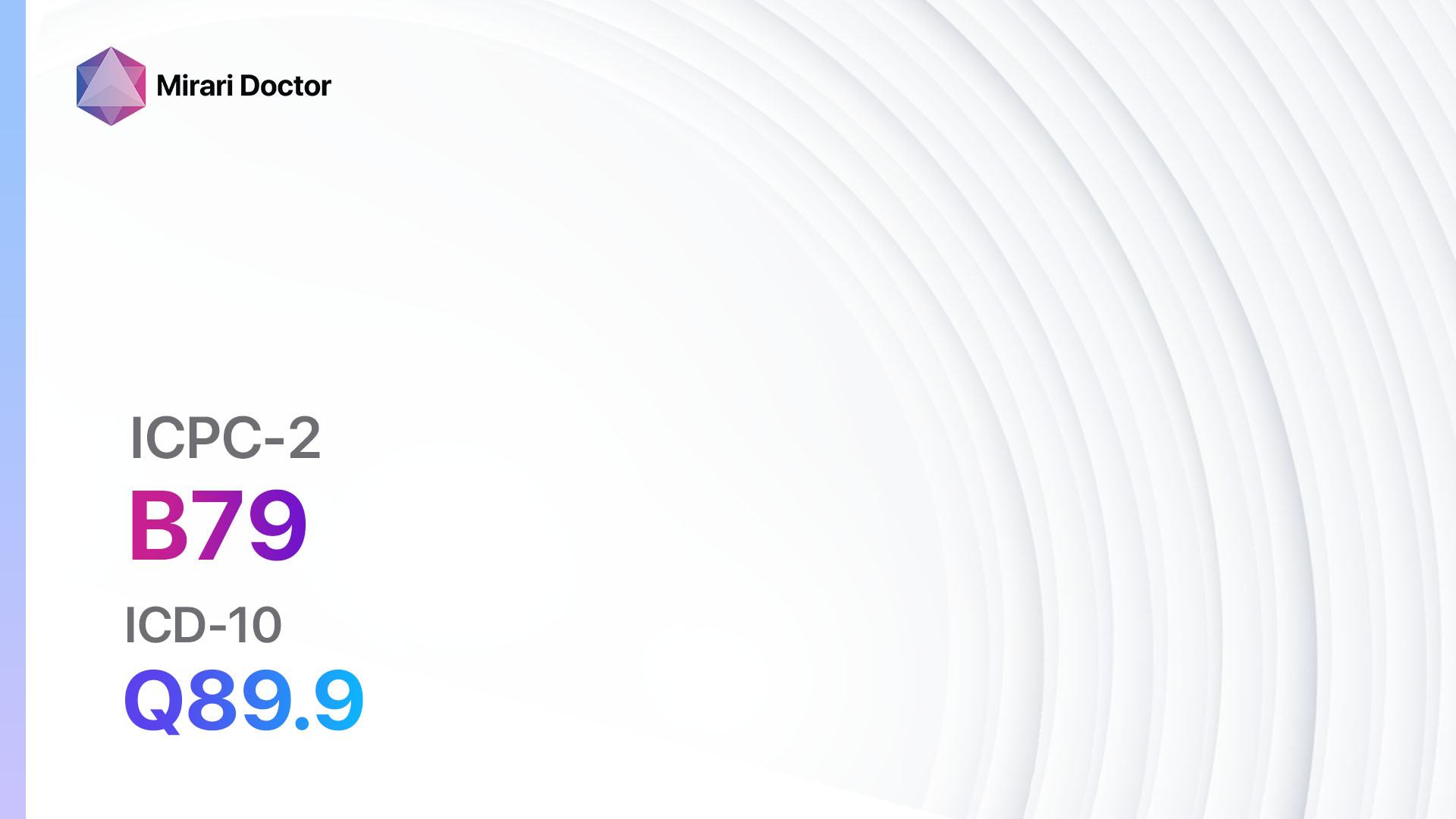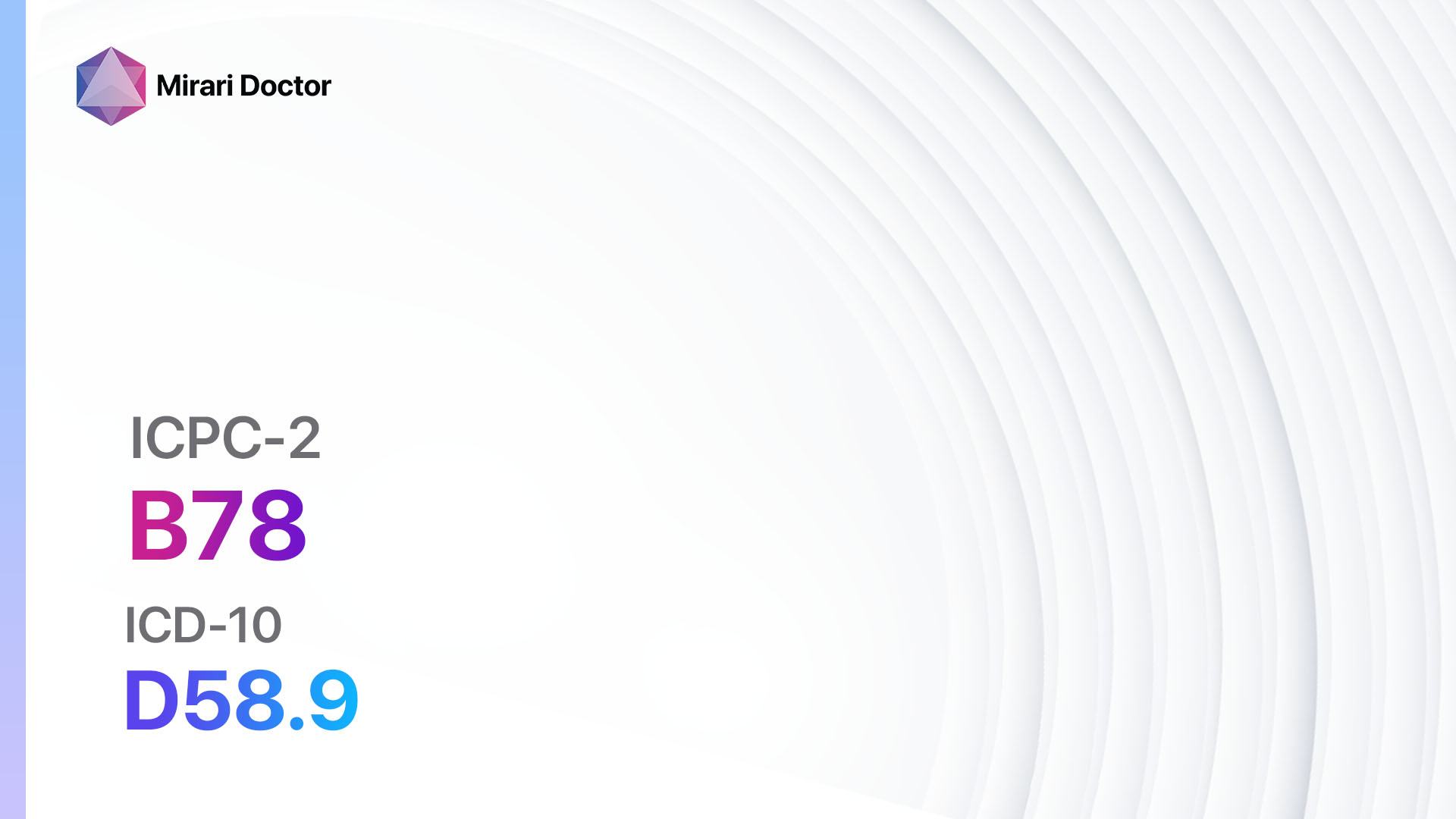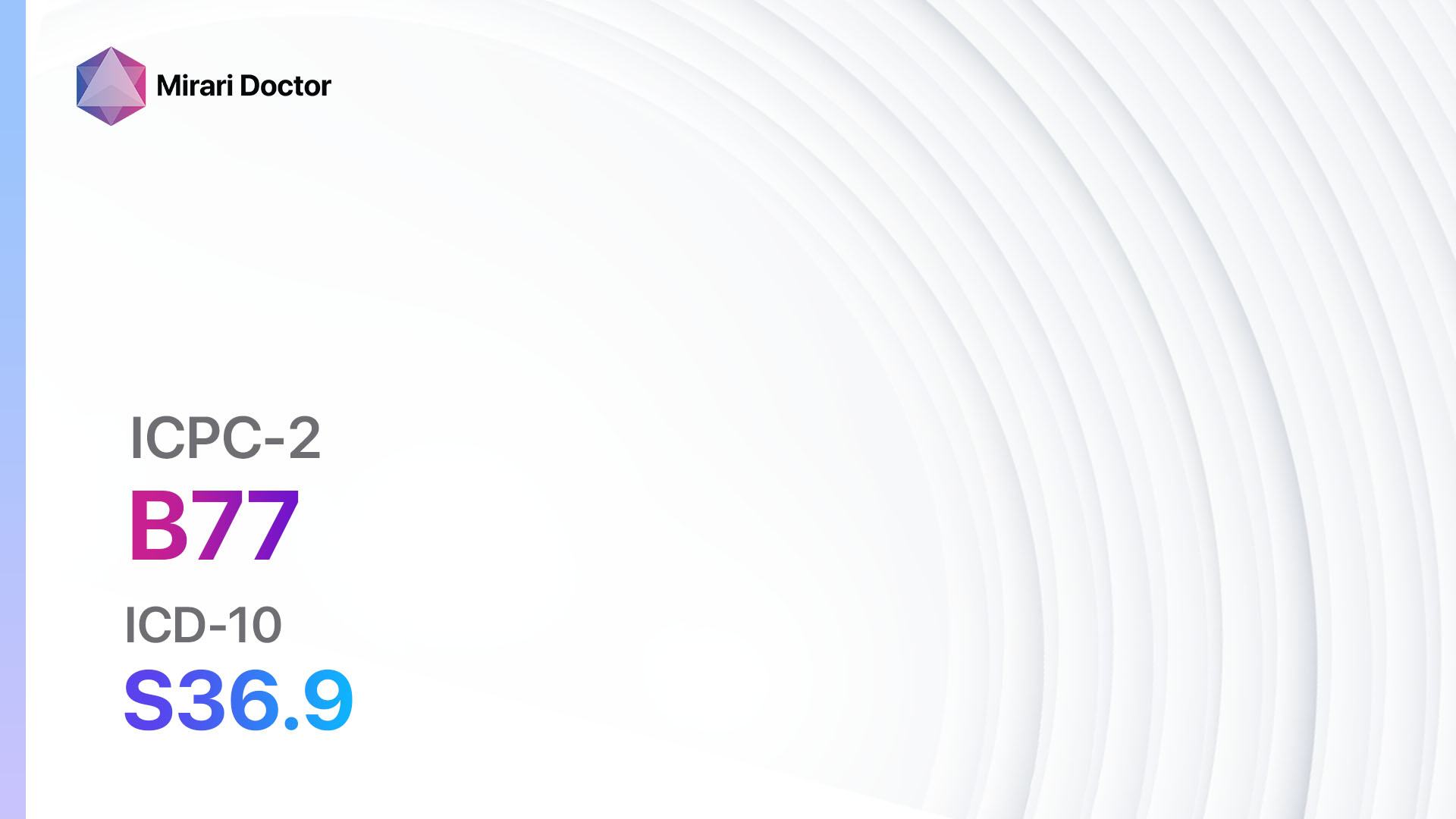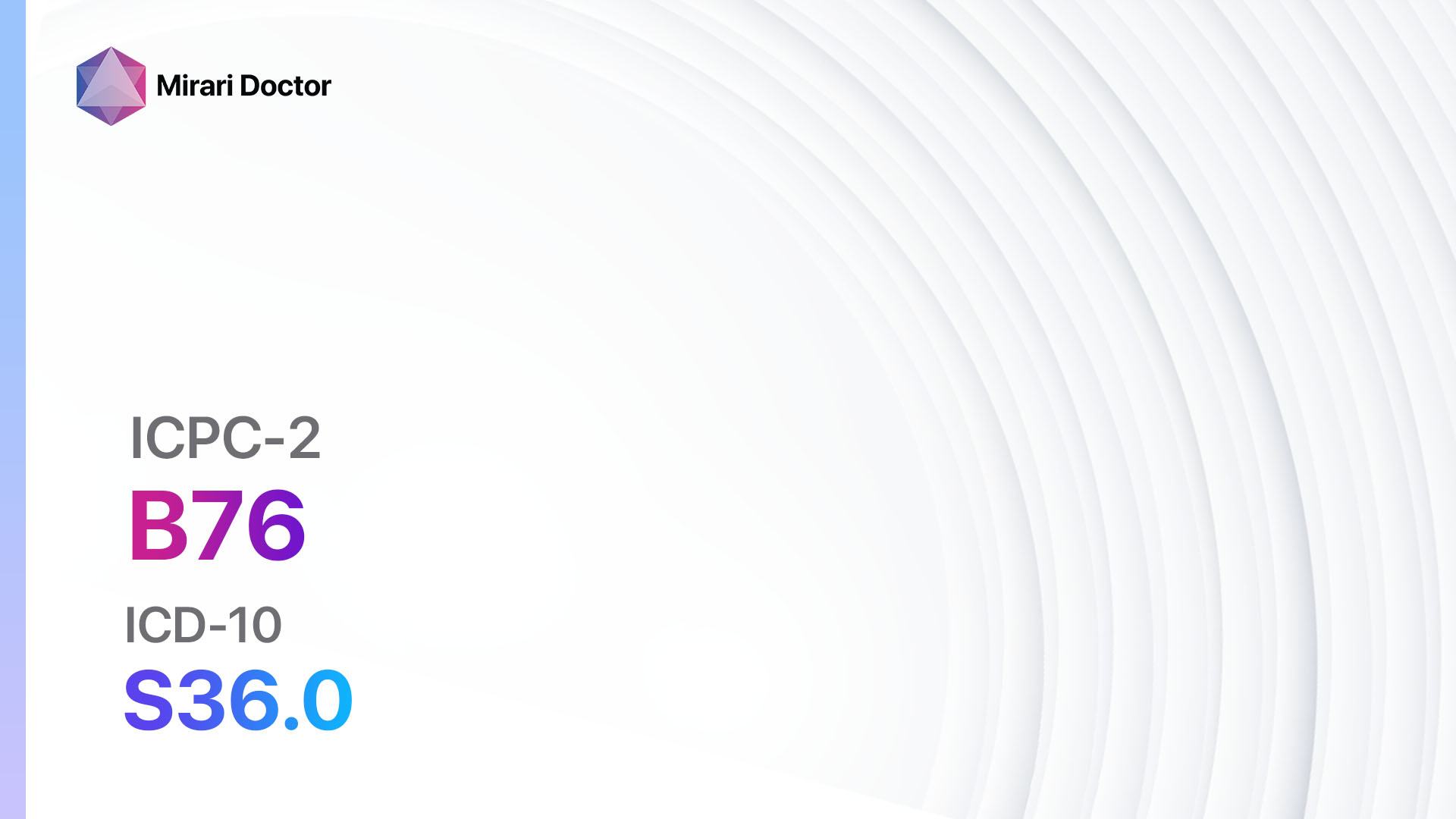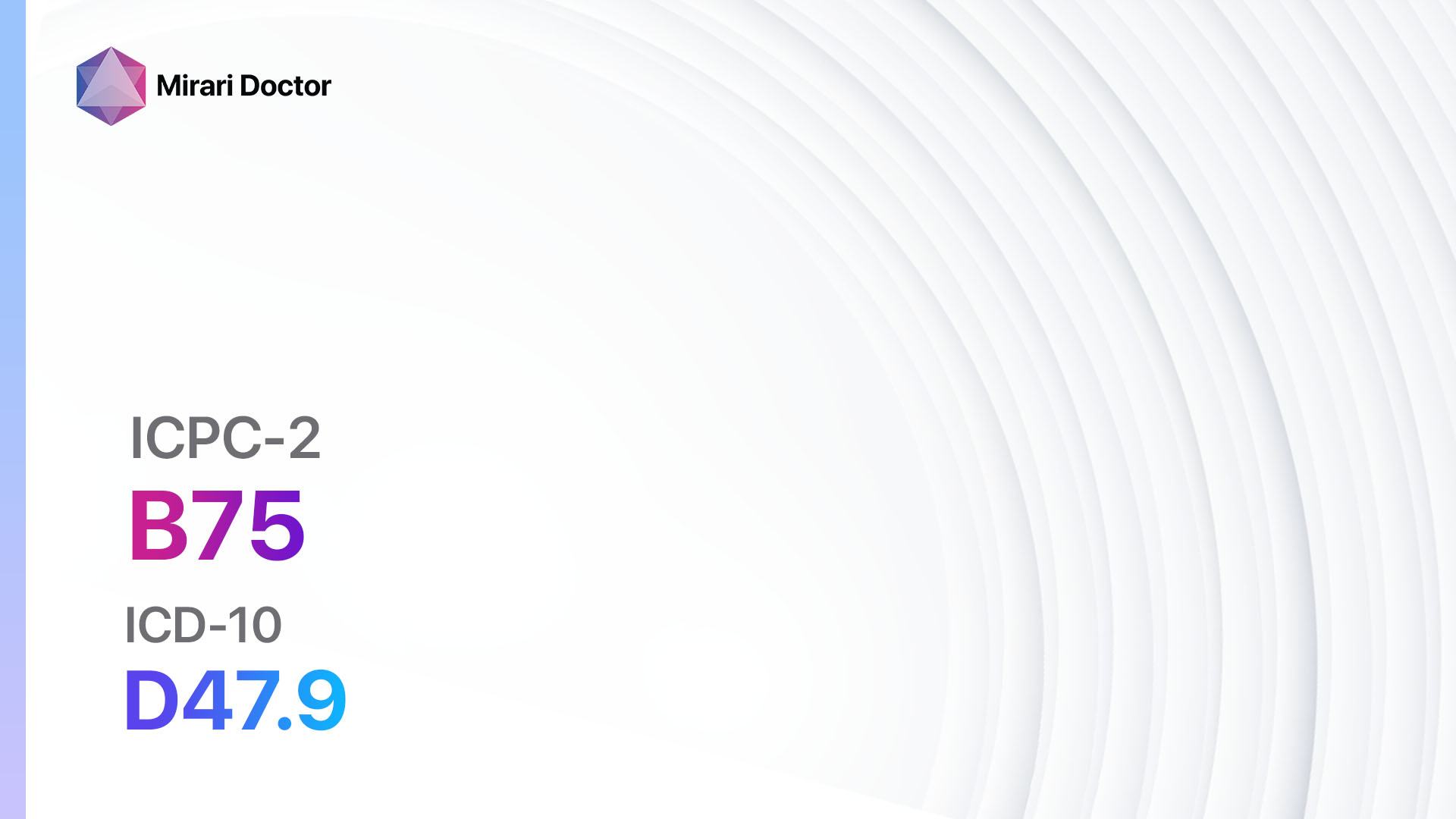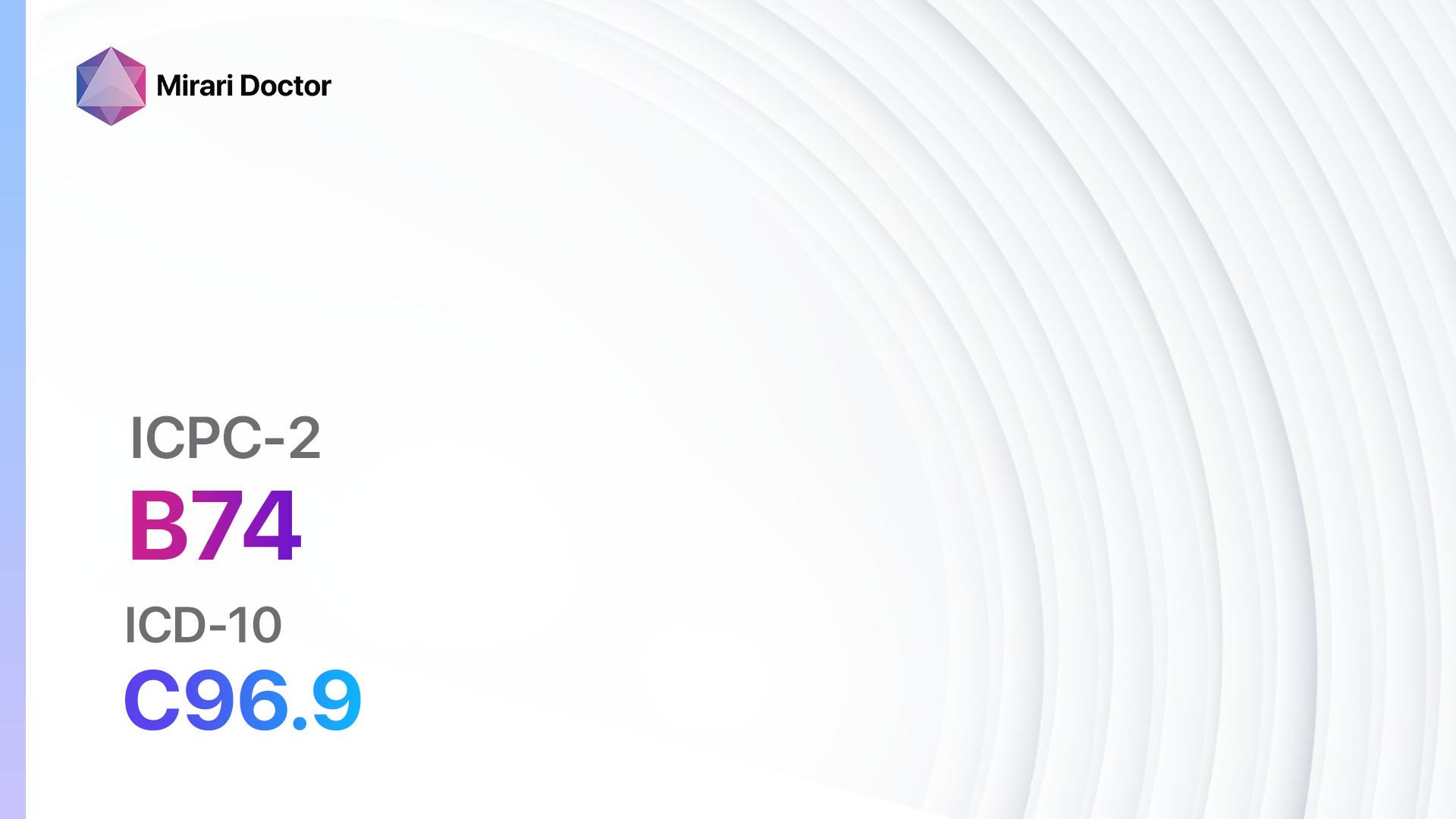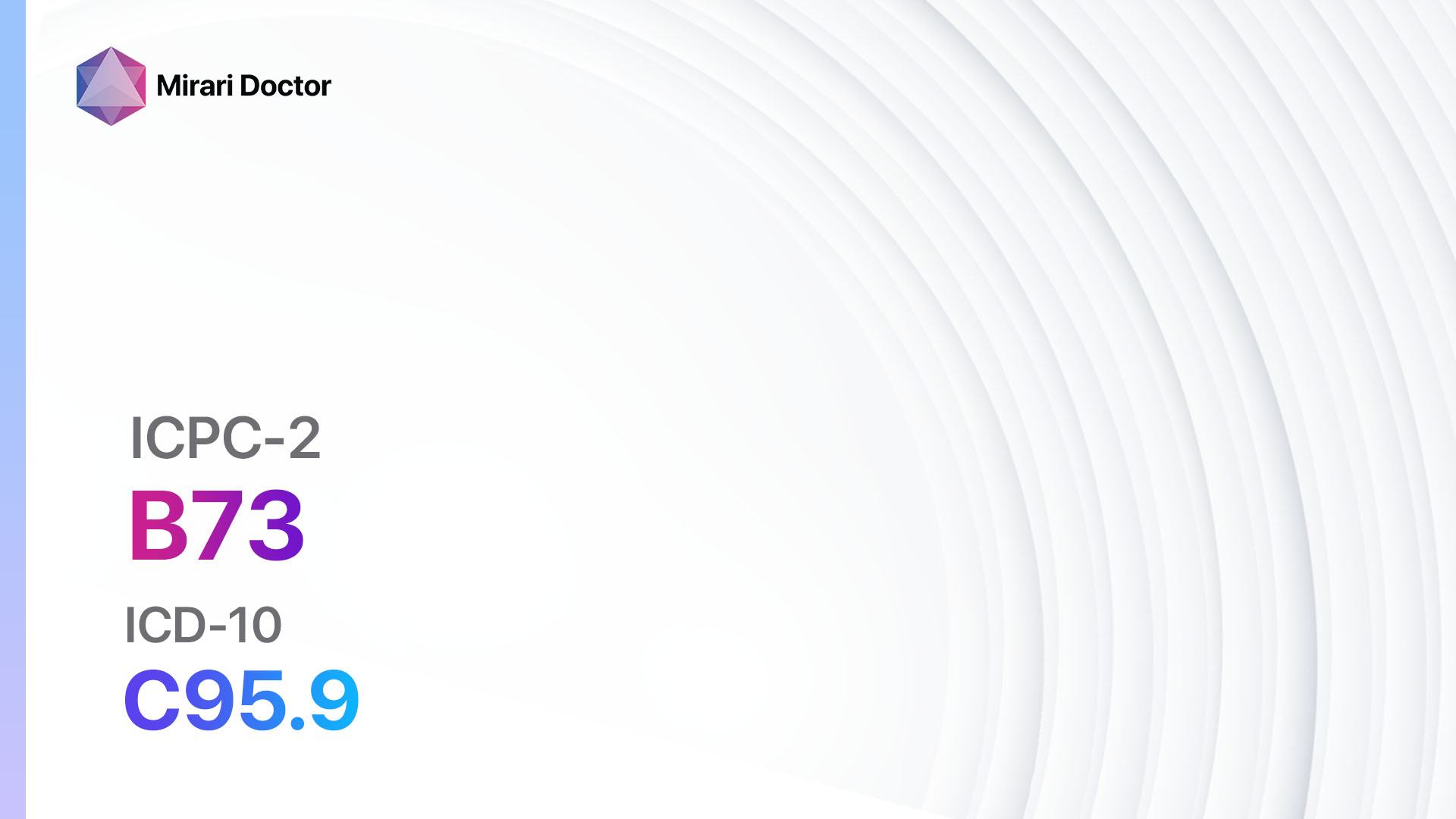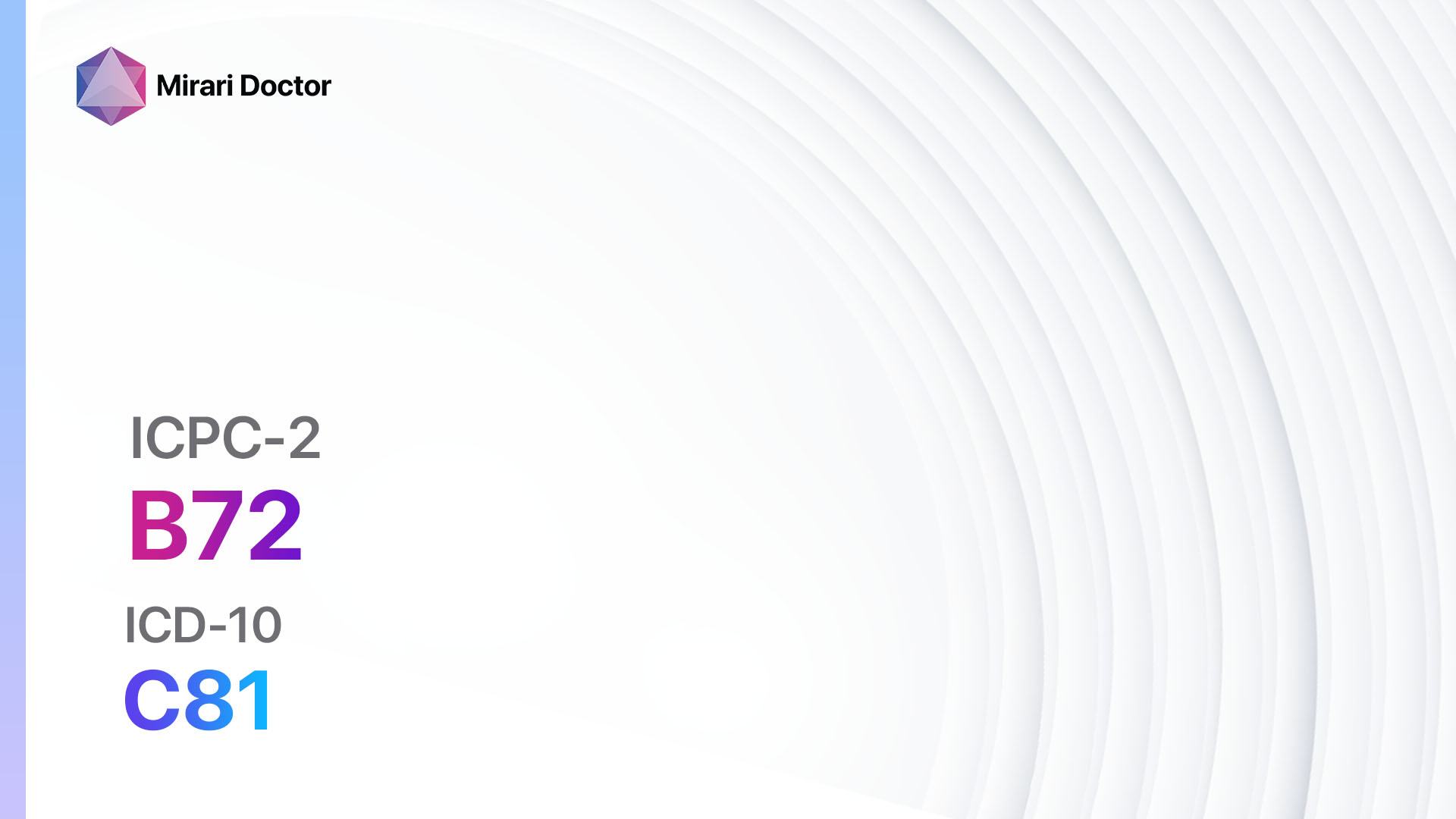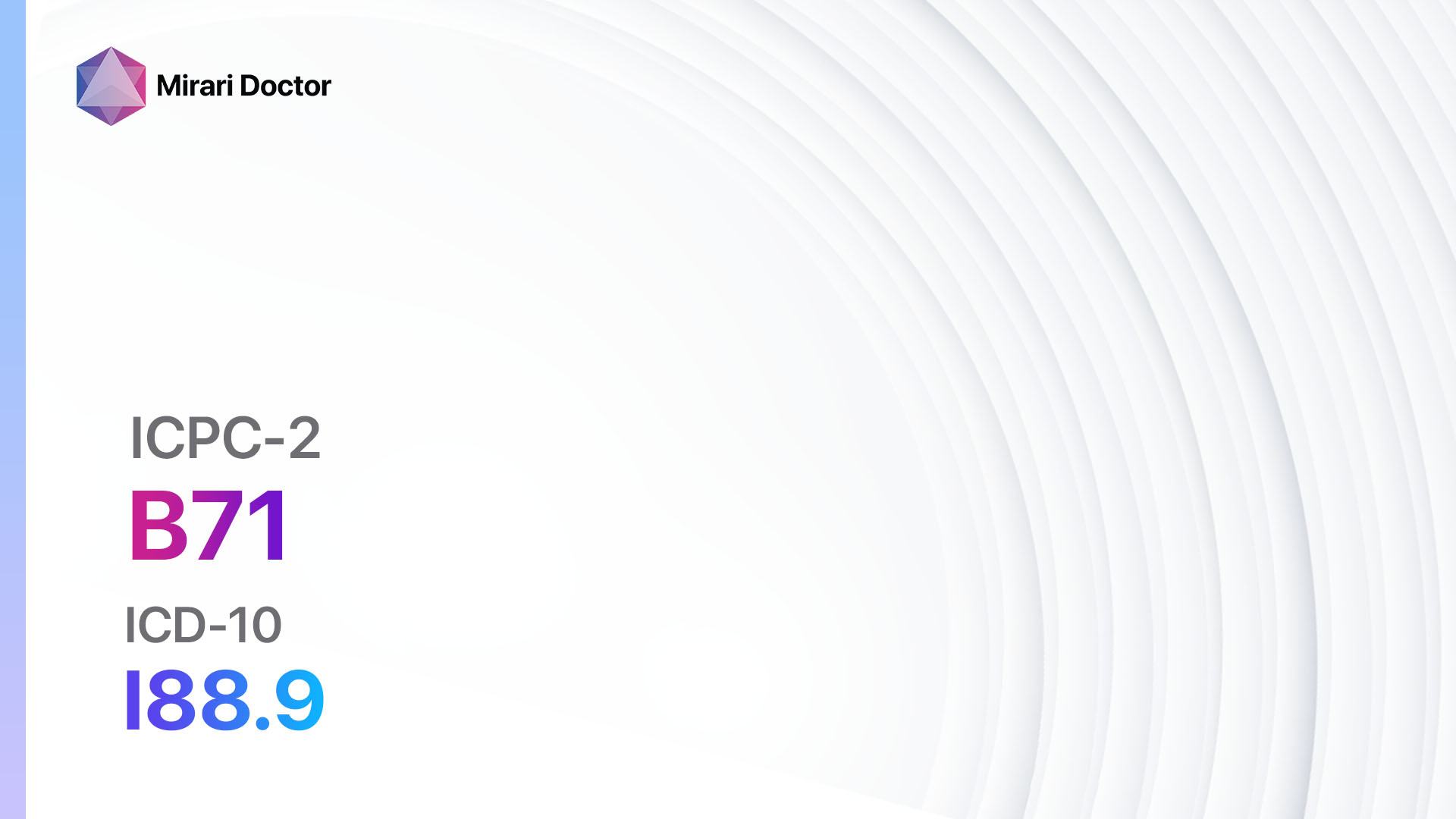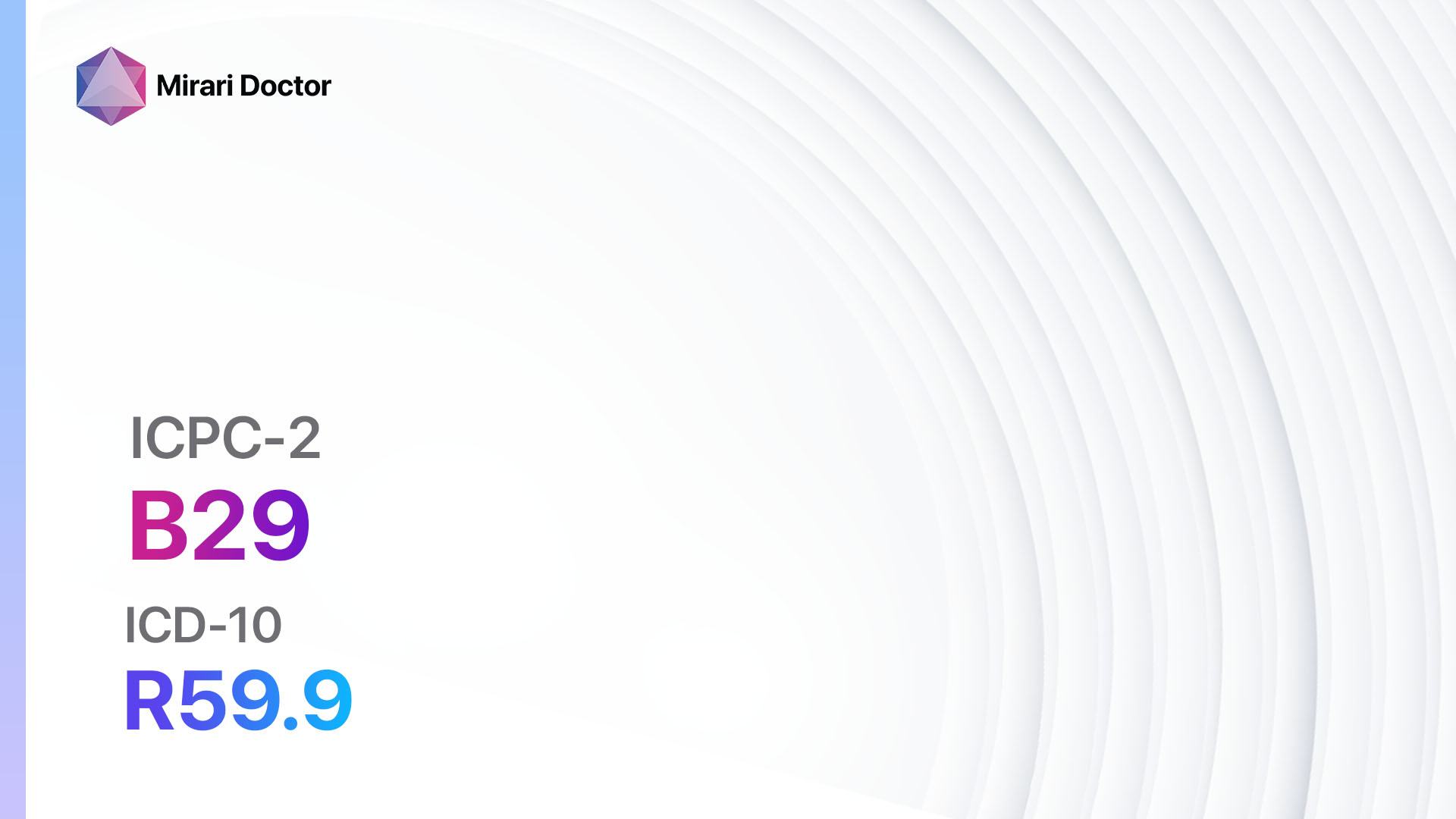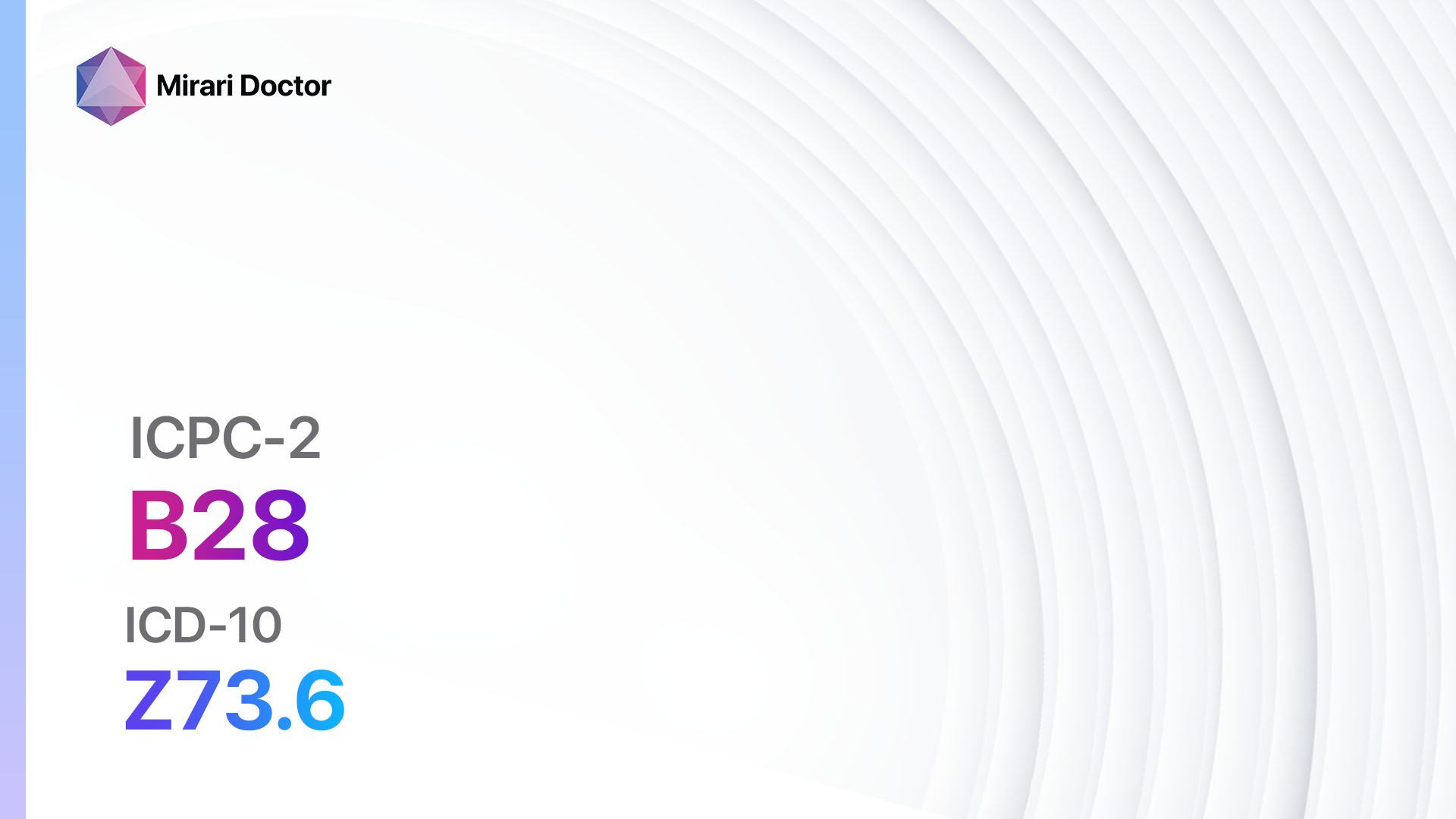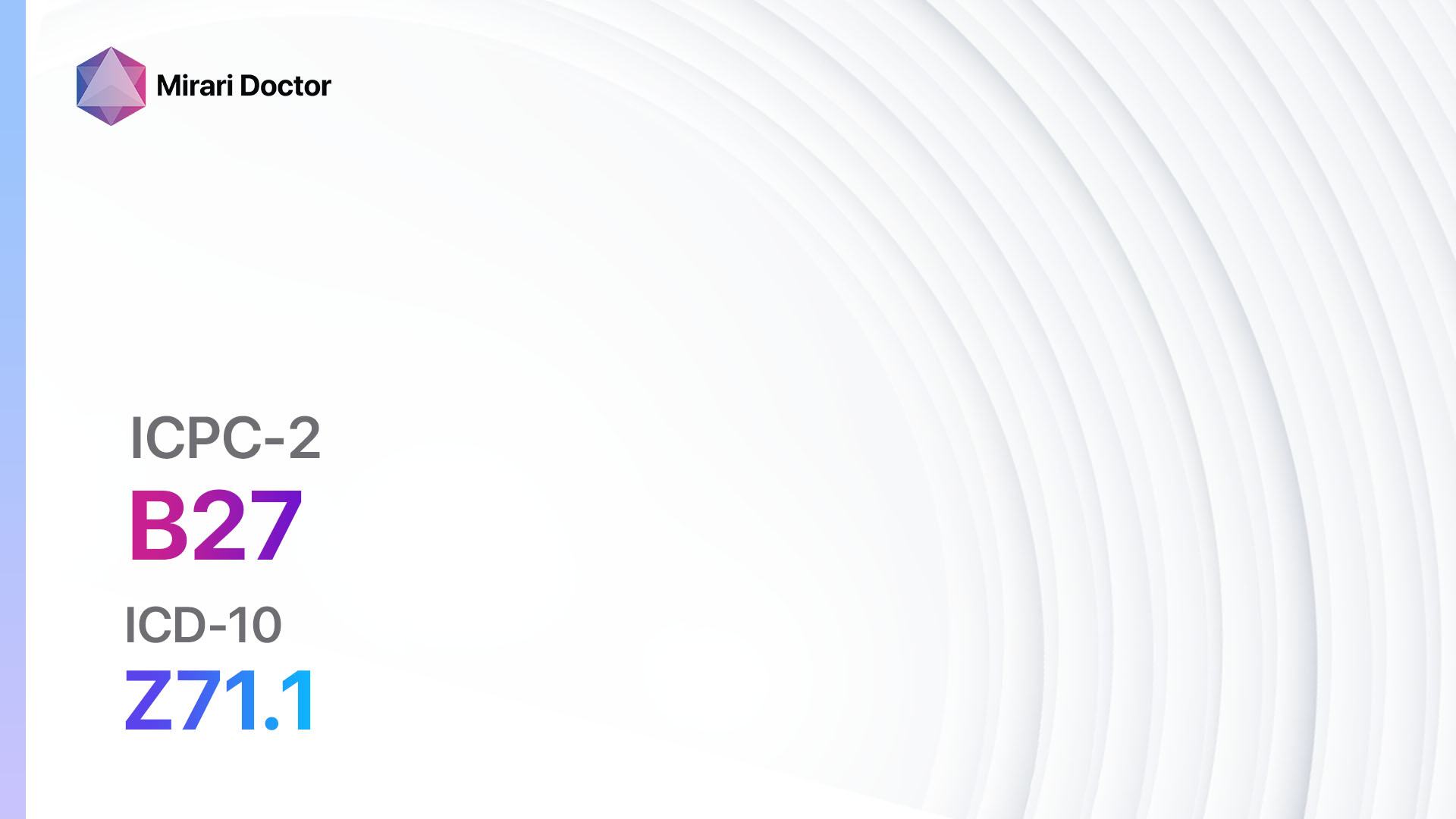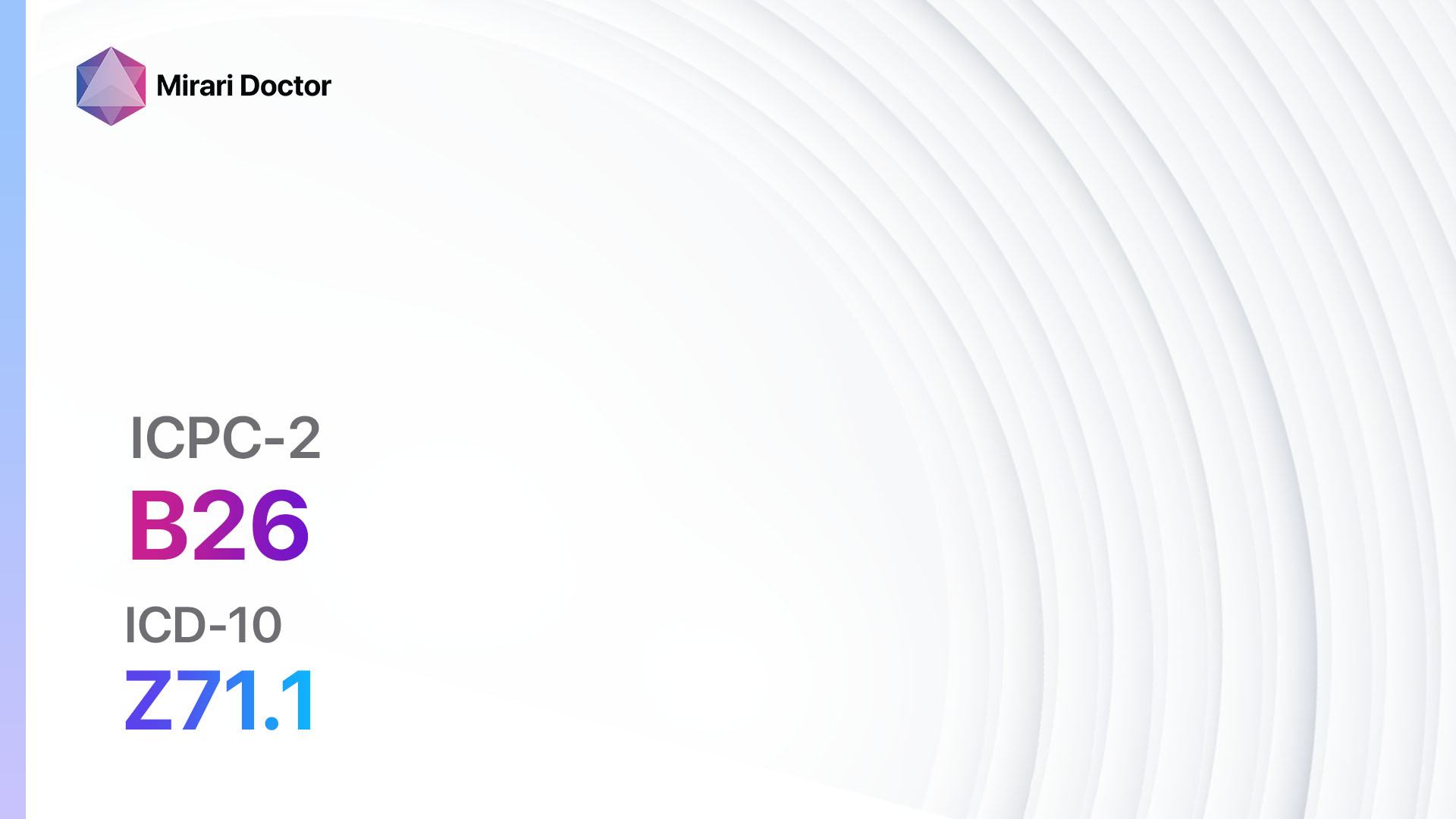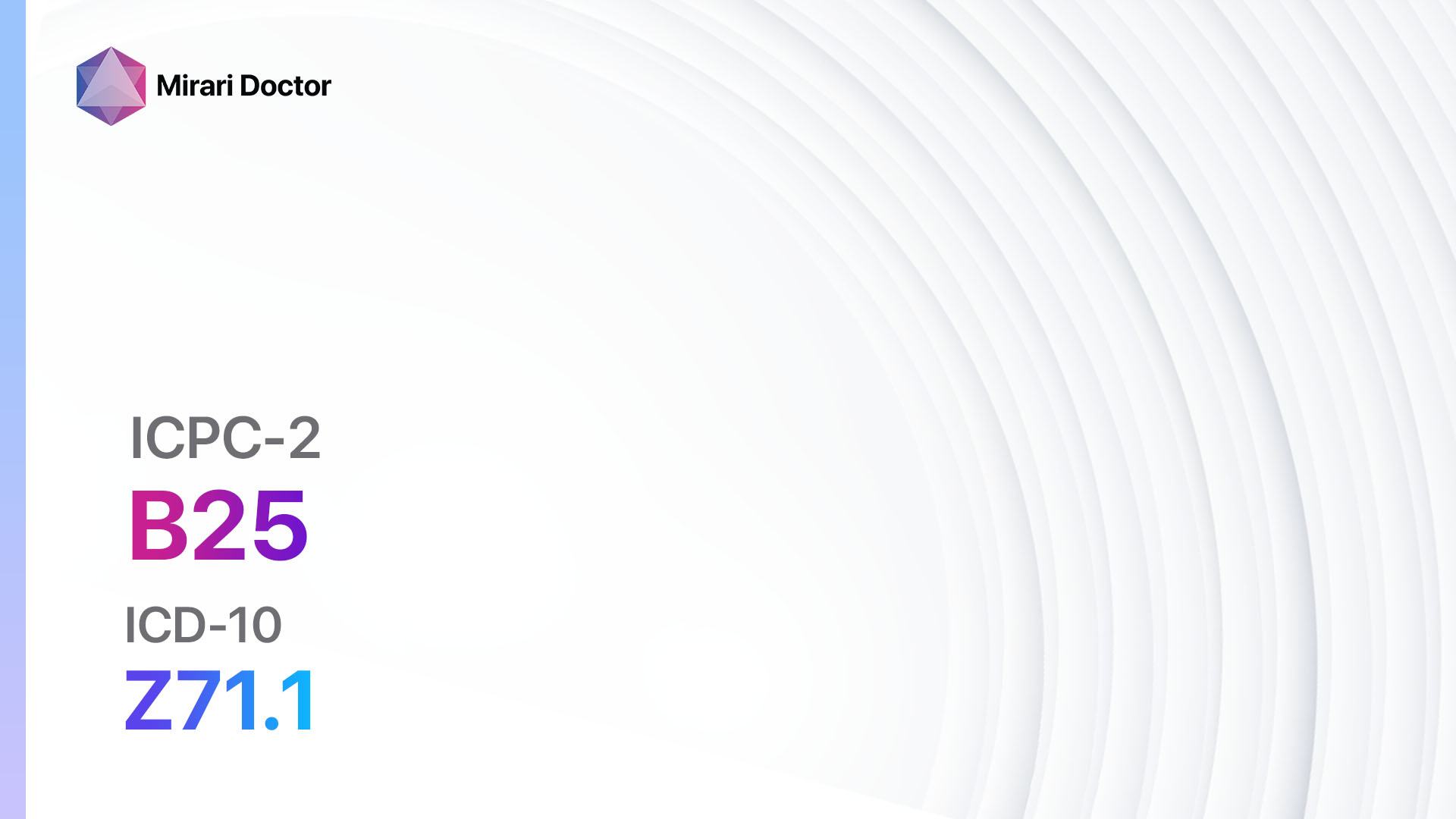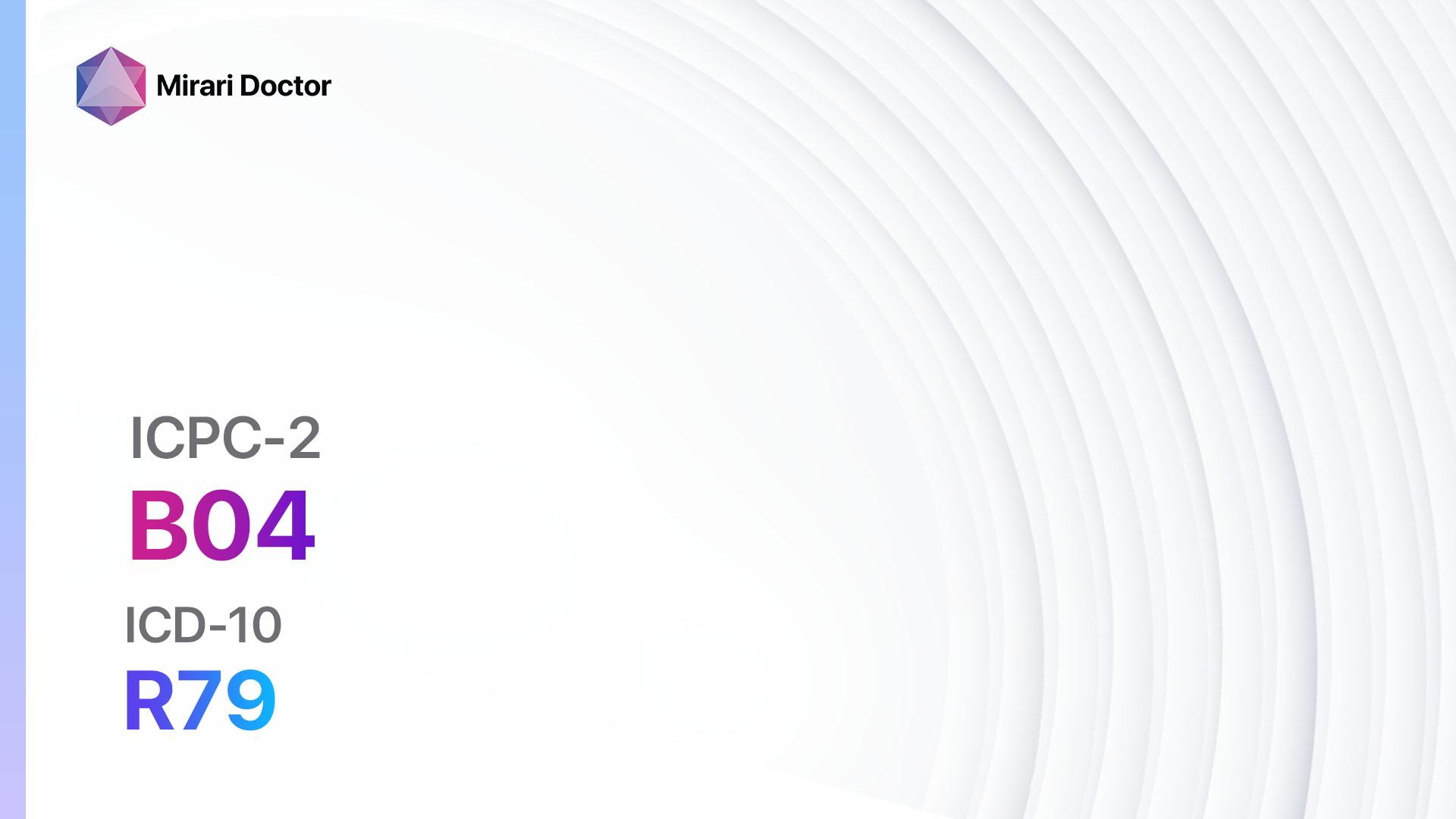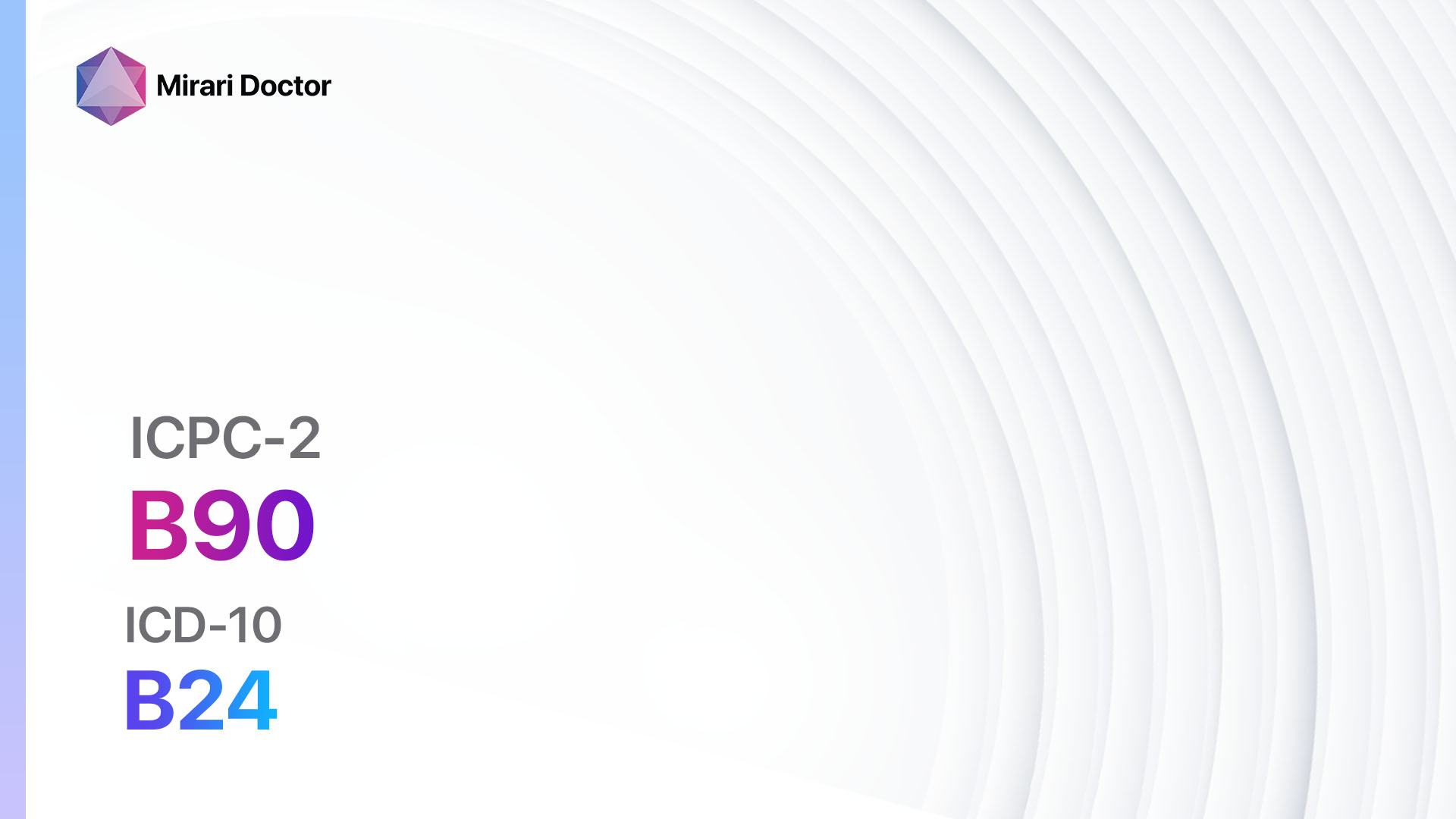
Introduction
HIV infection/AIDS is a chronic viral infection that affects the immune system, leading to a weakened ability to fight off infections and diseases.[1] It is a significant global health concern, with millions of people affected worldwide.[2] The aim of this guide is to provide a comprehensive overview of the diagnosis and management of HIV infection/AIDS.
Codes
- ICPC-2 Code: B90 HIV-infection/AIDS
- ICD-10 Code: B24 Unspecified human immunodeficiency virus [HIV] disease
Symptoms
- Fatigue: Persistent tiredness and lack of energy.[3]
- Fever: Recurrent or persistent fever.[3]
- Night sweats: Excessive sweating during sleep.[3]
- Weight loss: Unexplained weight loss.[3]
- Swollen lymph nodes: Enlarged lymph nodes in the neck, armpits, or groin.[3]
- Diarrhea: Frequent loose stools.[3]
- Skin rashes: Various types of skin rashes.[3]
- Oral thrush: White patches in the mouth or throat.[3]
- Recurrent infections: Frequent or severe infections.[3]
Causes
- Human Immunodeficiency Virus (HIV): The virus that causes HIV infection/AIDS.[4]
- Transmission: HIV is primarily transmitted through unprotected sexual intercourse, sharing needles or syringes, or from mother to child during childbirth or breastfeeding.[5]
Diagnostic Steps
Medical History
- Gather information about the patient’s sexual history, including number of partners, condom use, and history of sexually transmitted infections.[6]
- Assess the patient’s history of intravenous drug use or other high-risk behaviors.[6]
- Inquire about any symptoms related to HIV infection/AIDS, such as fatigue, weight loss, or recurrent infections.[6]
- Determine if the patient has any underlying medical conditions or is taking medications that may affect the immune system.[6]
Physical Examination
- Perform a thorough physical examination, including inspection of the skin for any rashes or lesions.[7]
- Palpate the lymph nodes to check for enlargement.[7]
- Examine the oral cavity for signs of oral thrush or other oral lesions.[7]
- Assess the general appearance and nutritional status of the patient.[7]
Laboratory Tests
- HIV Antibody Test: The initial screening test for HIV infection, which detects antibodies produced by the immune system in response to the virus.[8]
- HIV Antigen Test: A test that detects the presence of HIV antigens, which are viral proteins produced by the virus.[8]
- CD4 T-Cell Count: Measures the number of CD4 T-cells, which are a type of white blood cell that is targeted and destroyed by HIV.[8]
- Viral Load Test: Measures the amount of HIV genetic material (RNA) in the blood, indicating the level of viral replication.[8]
- Drug Resistance Testing: Determines if the virus has developed resistance to certain antiretroviral drugs.[8]
Diagnostic Imaging
- No specific diagnostic imaging tests are typically used for the diagnosis of HIV infection/AIDS.[9]
Other Tests
- Sexually Transmitted Infection (STI) Testing: Test for other STIs, such as syphilis, gonorrhea, or chlamydia, which may coexist with HIV infection.[10]
- Tuberculosis (TB) Testing: Test for TB infection, as HIV-infected individuals are at higher risk of developing active TB disease.[10]
- Hepatitis B and C Testing: Test for hepatitis B and C infections, as co-infection with these viruses is common in individuals with HIV.[10]
Follow-up and Patient Education
- Provide counseling and education to the patient regarding the diagnosis of HIV infection/AIDS.
- Discuss the importance of adherence to antiretroviral therapy (ART) and regular follow-up appointments.
- Offer support and resources for emotional and psychological well-being.
- Encourage the patient to inform sexual partners and needle-sharing contacts about their HIV status and the importance of testing.
Possible Interventions
Traditional Interventions
Medications:
Top 5 drugs for HIV infection/AIDS:
- Tenofovir disoproxil fumarate/emtricitabine (Truvada):
- Cost: $1,500-$2,000 per month.
- Contraindications: Hypersensitivity to the drug.
- Side effects: Nausea, diarrhea, headache.
- Severe side effects: Kidney problems, lactic acidosis.
- Drug interactions: Other medications that affect the kidneys.
- Warning: Regular monitoring of kidney function is required.
- Dolutegravir (Tivicay):
- Cost: $1,500-$2,000 per month.
- Contraindications: Hypersensitivity to the drug.
- Side effects: Headache, insomnia, nausea.
- Severe side effects: Allergic reactions, liver problems.
- Drug interactions: Medications that affect liver enzymes.
- Warning: Regular monitoring of liver function is required.
- Raltegravir (Isentress):
- Cost: $1,500-$2,000 per month.
- Contraindications: Hypersensitivity to the drug.
- Side effects: Headache, nausea, diarrhea.
- Severe side effects: Allergic reactions, liver problems.
- Drug interactions: Medications that affect liver enzymes.
- Warning: Regular monitoring of liver function is required.
- Efavirenz (Sustiva):
- Cost: $1,500-$2,000 per month.
- Contraindications: Hypersensitivity to the drug, severe liver disease.
- Side effects: Dizziness, rash, trouble sleeping.
- Severe side effects: Severe rash, liver problems.
- Drug interactions: Medications that affect liver enzymes.
- Warning: Regular monitoring of liver function is required.
- Darunavir (Prezista):
- Cost: $1,500-$2,000 per month.
- Contraindications: Hypersensitivity to the drug.
- Side effects: Nausea, diarrhea, headache.
- Severe side effects: Severe skin reactions, liver problems.
- Drug interactions: Medications that affect liver enzymes.
- Warning: Regular monitoring of liver function is required.
Alternative Drugs:
- Lopinavir/ritonavir (Kaletra): A combination medication used for HIV treatment.
- Atazanavir (Reyataz): Another protease inhibitor used in HIV treatment.
- Rilpivirine (Edurant): A non-nucleoside reverse transcriptase inhibitor (NNRTI) used in HIV treatment.
- Elvitegravir/cobicistat/emtricitabine/tenofovir alafenamide (Genvoya): A combination medication used for HIV treatment.
- Bictegravir/emtricitabine/tenofovir alafenamide (Biktarvy): A combination medication used for HIV treatment.
Surgical Procedures:
- No surgical procedures are typically performed for the treatment of HIV infection/AIDS.
Alternative Interventions
- Acupuncture: May help improve overall well-being and reduce stress. Cost: $60-$120 per session.
- Herbal supplements: Some herbal supplements, such as Echinacea or Astragalus, may have potential immune-boosting effects. Cost: Varies depending on the specific supplement.
- Mind-body therapies: Techniques such as meditation, yoga, or tai chi may help reduce stress and improve immune function. Cost: Varies depending on the specific practice.
- Nutritional supplements: Certain supplements, such as vitamin C, vitamin D, or zinc, may support immune function. Cost: Varies depending on the specific supplement.
- Exercise: Regular physical activity can help improve overall health and immune function. Cost: Varies depending on individual preferences and access to exercise facilities.
Lifestyle Interventions
- Adherence to antiretroviral therapy (ART): Taking medications as prescribed is crucial for managing HIV infection/AIDS.
- Safe sex practices: Using condoms consistently and correctly can reduce the risk of transmitting HIV to sexual partners.
- Harm reduction strategies: Avoiding sharing needles or other drug paraphernalia can prevent the transmission of HIV and other bloodborne infections.
- Healthy diet: Consuming a balanced diet rich in fruits, vegetables, whole grains, and lean proteins can support immune function.
- Regular exercise: Engaging in regular physical activity can improve overall health and well-being.
- Stress management: Techniques such as deep breathing, meditation, or mindfulness can help reduce stress and support immune function.
- Supportive relationships: Building a strong support network can provide emotional and psychological support.
It is important to note that the cost ranges provided are approximate and may vary depending on the location and availability of the interventions.
Mirari Cold Plasma Alternative Intervention
Understanding Mirari Cold Plasma
- Safe and Non-Invasive Treatment: Mirari Cold Plasma is a safe and non-invasive treatment option for various skin conditions. It does not require incisions, minimizing the risk of scarring, bleeding, or tissue damage.
- Efficient Extraction of Foreign Bodies: Mirari Cold Plasma facilitates the removal of foreign bodies from the skin by degrading and dissociating organic matter, allowing easier access and extraction.
- Pain Reduction and Comfort: Mirari Cold Plasma has a local analgesic effect, providing pain relief during the treatment, making it more comfortable for the patient.
- Reduced Risk of Infection: Mirari Cold Plasma has antimicrobial properties, effectively killing bacteria and reducing the risk of infection.
- Accelerated Healing and Minimal Scarring: Mirari Cold Plasma stimulates wound healing and tissue regeneration, reducing healing time and minimizing the formation of scars.
Mirari Cold Plasma Prescription
Video instructions for using Mirari Cold Plasma Device – B90 HIV-infection/AIDS (ICD-10:B24)
| Mild | Moderate | Severe |
| Mode setting: 1 (Infection) Location: 7 (Neuro system & ENT) Morning: 15 minutes, Evening: 15 minutes |
Mode setting: 1 (Infection) Location: 7 (Neuro system & ENT) Morning: 30 minutes, Lunch: 30 minutes, Evening: 30 minutes |
Mode setting: 1 (Infection) Location: 7 (Neuro system & ENT) Morning: 30 minutes, Lunch: 30 minutes, Evening: 30 minutes |
| Mode setting: 7 (Immunotherapy) Location: 1 (Sacrum) Morning: 15 minutes, Evening: 15 minutes |
Mode setting: 7 (Immunotherapy) Location: 1 (Sacrum) Morning: 30 minutes, Lunch: 30 minutes, Evening: 30 minutes |
Mode setting: 7 (Immunotherapy) Location: 1 (Sacrum) Morning: 30 minutes, Lunch: 30 minutes, Evening: 30 minutes |
| Mode setting: 7 (Immunotherapy) Location: 1 (Sacrum) Morning: 15 minutes, Evening: 15 minutes |
Mode setting: 7 (Immunotherapy) Location: 1 (Sacrum) Morning: 30 minutes, Lunch: 30 minutes, Evening: 30 minutes |
Mode setting: 7 (Immunotherapy) Location: 1 (Sacrum) Morning: 30 minutes, Lunch: 30 minutes, Evening: 30 minutes |
| Total Morning: 45 minutes approx. $7.50 USD, Evening: 45 minutes approx. $7.50 USD |
Total Morning: 90 minutes approx. $15 USD, Lunch: 90 minutes approx. $15 USD, Evening: 90 minutes approx. $15 USD |
Total Morning: 90 minutes approx. $15 USD, Lunch: 90 minutes approx. $15 USD, Evening: 90 minutes approx. $15 USD |
| Usual treatment for 7-60 days approx. $105 USD – $900 USD | Usual treatment for 6-8 weeks approx. $1,890 USD – $2,520 USD |
Usual treatment for 3-6 months approx. $4,050 USD – $8,100 USD
|
 |
|
Use the Mirari Cold Plasma device to treat HIV-infection/aids effectively.
WARNING: MIRARI COLD PLASMA IS DESIGNED FOR THE HUMAN BODY WITHOUT ANY ARTIFICIAL OR THIRD PARTY PRODUCTS. USE OF OTHER PRODUCTS IN COMBINATION WITH MIRARI COLD PLASMA MAY CAUSE UNPREDICTABLE EFFECTS, HARM OR INJURY. PLEASE CONSULT A MEDICAL PROFESSIONAL BEFORE COMBINING ANY OTHER PRODUCTS WITH USE OF MIRARI.
Step 1: Cleanse the Skin
- Start by cleaning the affected area of the skin with a gentle cleanser or mild soap and water. Gently pat the area dry with a clean towel.
Step 2: Prepare the Mirari Cold Plasma device
- Ensure that the Mirari Cold Plasma device is fully charged or has fresh batteries as per the manufacturer’s instructions. Make sure the device is clean and in good working condition.
- Switch on the Mirari device using the power button or by following the specific instructions provided with the device.
- Some Mirari devices may have adjustable settings for intensity or treatment duration. Follow the manufacturer’s instructions to select the appropriate settings based on your needs and the recommended guidelines.
Step 3: Apply the Device
- Place the Mirari device in direct contact with the affected area of the skin. Gently glide or hold the device over the skin surface, ensuring even coverage of the area experiencing.
- Slowly move the Mirari device in a circular motion or follow a specific pattern as indicated in the user manual. This helps ensure thorough treatment coverage.
Step 4: Monitor and Assess:
- Keep track of your progress and evaluate the effectiveness of the Mirari device in managing your HIV-infection/aids. If you have any concerns or notice any adverse reactions, consult with your health care professional.
Note
This guide is for informational purposes only and should not replace the advice of a medical professional. Always consult with your healthcare provider or a qualified medical professional for personal advice, diagnosis, or treatment. Do not solely rely on the information presented here for decisions about your health. Use of this information is at your own risk. The authors of this guide, nor any associated entities or platforms, are not responsible for any potential adverse effects or outcomes based on the content.
Mirari Cold Plasma System Disclaimer
- Purpose: The Mirari Cold Plasma System is a Class 2 medical device designed for use by trained healthcare professionals. It is registered for use in Thailand and Vietnam. It is not intended for use outside of these locations.
- Informational Use: The content and information provided with the device are for educational and informational purposes only. They are not a substitute for professional medical advice or care.
- Variable Outcomes: While the device is approved for specific uses, individual outcomes can differ. We do not assert or guarantee specific medical outcomes.
- Consultation: Prior to utilizing the device or making decisions based on its content, it is essential to consult with a Certified Mirari Tele-Therapist and your medical healthcare provider regarding specific protocols.
- Liability: By using this device, users are acknowledging and accepting all potential risks. Neither the manufacturer nor the distributor will be held accountable for any adverse reactions, injuries, or damages stemming from its use.
- Geographical Availability: This device has received approval for designated purposes by the Thai and Vietnam FDA. As of now, outside of Thailand and Vietnam, the Mirari Cold Plasma System is not available for purchase or use.
References
- World Health Organization. (2021). HIV/AIDS. https://www.who.int/news-room/fact-sheets/detail/hiv-aids
- UNAIDS. (2021). Global HIV & AIDS statistics — Fact sheet. https://www.unaids.org/en/resources/fact-sheet
- Centers for Disease Control and Prevention. (2021). About HIV. https://www.cdc.gov/hiv/basics/whatishiv.html
- National Institute of Allergy and Infectious Diseases. (2019). HIV/AIDS. https://www.niaid.nih.gov/diseases-conditions/hivaids
- HIV.gov. (2021). How Is HIV Transmitted? https://www.hiv.gov/hiv-basics/overview/about-hiv-and-aids/how-is-hiv-transmitted
- Saag, M. S. (2021). HIV Infection — Screening, Diagnosis, and Treatment. New England Journal of Medicine, 384(22), 2131-2143. https://doi.org/10.1056/nejmcp2023884
- Justiz Vaillant, A. A., Gulick, P. G., & Pham, P. A. (2021). HIV Infection. In StatPearls. StatPearls Publishing. https://www.ncbi.nlm.nih.gov/books/NBK534860/
- Fearon, M. (2005). The laboratory diagnosis of HIV infections. The Canadian Journal of Infectious Diseases & Medical Microbiology, 16(1), 26-30. https://doi.org/10.1155/2005/515941
- Cowan, E., McGowan, J. P., Fine, S. M., Vail, R., Merrick, S. T., Radix, A., Hoffmann, C. J., & Gonzalez, C. J. (2021). Diagnosis and Management of Acute HIV Infection. In HIV Clinical Guidelines. New York State Department of Health AIDS Institute. https://www.ncbi.nlm.nih.gov/books/NBK563020/
- Nyulangone.org. (n.d.). Diagnosing HIV Infection & AIDS. https://nyulangone.org/conditions/hiv-infection-aids/diagnosis
Related articles
Made in USA


